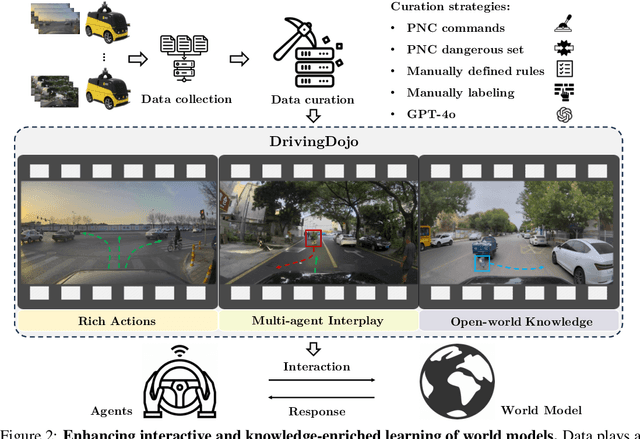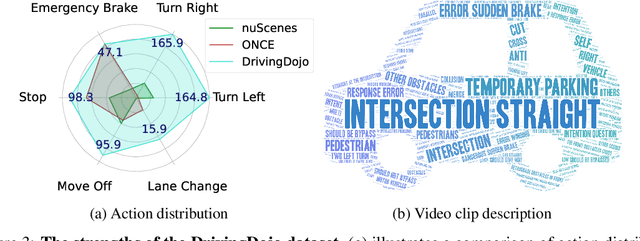Hengchen Dai
DrivingDojo Dataset: Advancing Interactive and Knowledge-Enriched Driving World Model
Oct 14, 2024



Abstract:Driving world models have gained increasing attention due to their ability to model complex physical dynamics. However, their superb modeling capability is yet to be fully unleashed due to the limited video diversity in current driving datasets. We introduce DrivingDojo, the first dataset tailor-made for training interactive world models with complex driving dynamics. Our dataset features video clips with a complete set of driving maneuvers, diverse multi-agent interplay, and rich open-world driving knowledge, laying a stepping stone for future world model development. We further define an action instruction following (AIF) benchmark for world models and demonstrate the superiority of the proposed dataset for generating action-controlled future predictions.
UST: Unifying Spatio-Temporal Context for Trajectory Prediction in Autonomous Driving
May 06, 2020



Abstract:Trajectory prediction has always been a challenging problem for autonomous driving, since it needs to infer the latent intention from the behaviors and interactions from traffic participants. This problem is intrinsically hard, because each participant may behave differently under different environments and interactions. This key is to effectively model the interlaced influence from both spatial context and temporal context. Existing work usually encodes these two types of context separately, which would lead to inferior modeling of the scenarios. In this paper, we first propose a unified approach to treat time and space dimensions equally for modeling spatio-temporal context. The proposed module is simple and easy to implement within several lines of codes. In contrast to existing methods which heavily rely on recurrent neural network for temporal context and hand-crafted structure for spatial context, our method could automatically partition the spatio-temporal space to adapt the data. Lastly, we test our proposed framework on two recently proposed trajectory prediction dataset ApolloScape and Argoverse. We show that the proposed method substantially outperforms the previous state-of-the-art methods while maintaining its simplicity. These encouraging results further validate the superiority of our approach.
 Add to Chrome
Add to Chrome Add to Firefox
Add to Firefox Add to Edge
Add to Edge